#Yoko Umemura
Photo
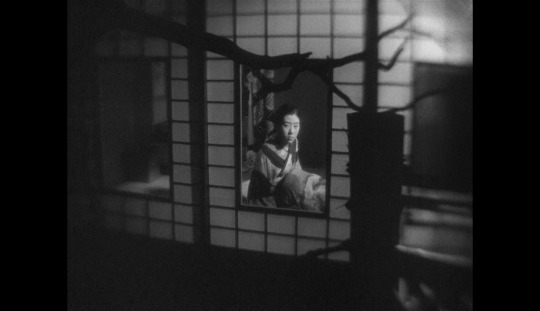


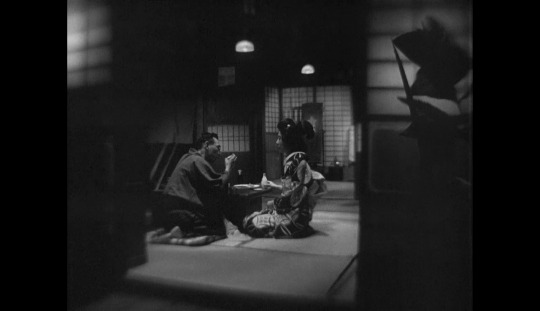
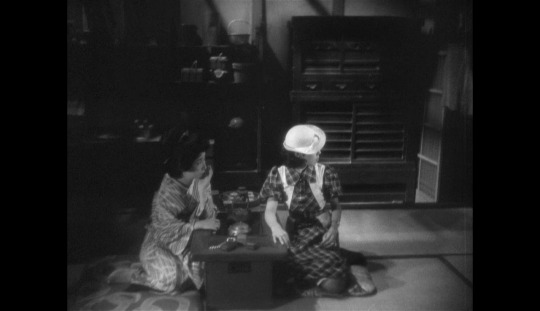

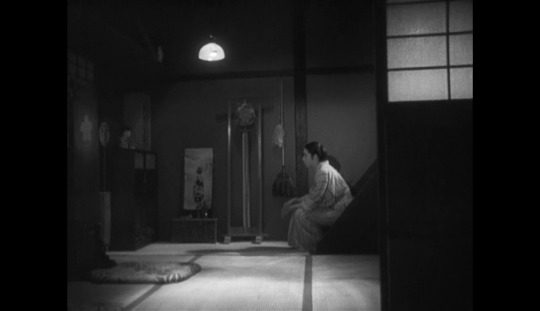
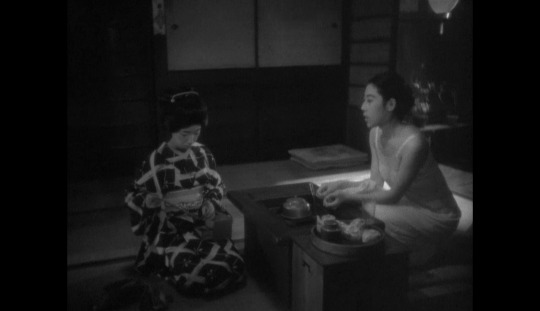
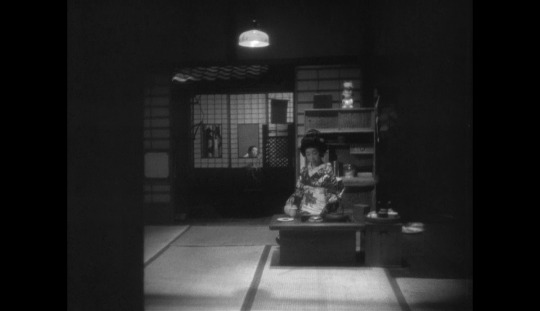
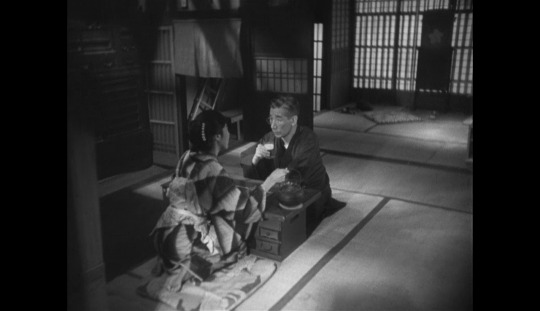
Sisters of the Gion (Kenji Mizoguchi, 1936)
#Sisters of the Gion#Kenji Mizoguchi#Mizoguchi#long shot#japan#1936#black and white#interiors#Gion no shimai#Isuzu Yamada#Yôko Umemura#Yoko Umemura#Benkei Shiganoya#Minoru Miki#architecture#milk#drink#teapot
124 notes
·
View notes
Text

actress Yoko Umemura (1930s)
1 note
·
View note
Photo

Japanese actresses Yoshiko Okada, Yoshiko Tokugawa, Yoko Umemura and Mitsuyo Hara. 1927
110 notes
·
View notes
Photo

Isuzu Yamada in Osaka Elegy (Kenji Mizoguchi, 1936)
Cast: Isuzu Yamada, Seiichi Takagawa, Chiyoko Ukura, Shinpachiro Asaka, Benkei Shiganoya, Yoko Umemura, Kensaku Hara, Shizuko Takizawa, Eitaro Shindo, Kunio Tamura, Takashi Shimura. Screenplay: Yoshikata Yoda, Tadashi Fujiwara, Kenji Mizoguchi, Saburo Okada. Cinematography: Minoru Miki. Film editing: Tazuko Sakane. Music: Koichi Takagi.
It's easy to imagine Kenji Mizoguchi's Osaka Elegy remade into a 1930s "women's picture" starring Bette Davis, except that nothing made in Hollywood under the infantilizing Production Code would have had the depth and insight into the real problems of women that Mizoguchi's film does. Mizoguchi's direction frames the story elegantly: He begins with a shot of the neon-lighted city, backed by the pop standard "Stairway to the Stars" on the soundtrack, as day gradually breaks and the glamour of the neon fades into the drab reality of the daytime city. We go to the home of Sonosuke Asai (Benkei Shiganoya), the head of a large pharmaceuticals company, where he berates the maids for small infractions and quarrels with his shrewish wife, Sumiko (Yoko Umemura). The opening sets a tone of disillusionment that pervades the entire film, which becomes a sharp commentary on both traditional and contemporary sexual roles. The film's protagonist is Ayako (Isuzu Yamada), switchboard operator at Asai Pharmaceuticals, whom Asai wants to become his mistress. Ayako is reluctant -- she has a boyfriend, Nishimura (Kensaku Hara), another employee at the company -- but her feckless father (Shinpachiro Asaka) has been skimming from the till at work and has lost the money in the stock market. So she quits her job, lets Asai set her up in a fancy modern apartment, and sends her father the money he needs. After Asai's wife uncovers the arrangement, a friend of Asai's, Fujino (Eitaro Shindo), tries to move in on Ayako. But Ayako reconnects with Nishimura, who proposes to her. Uncertain how he will respond to the truth about her life -- she has told him she works in a beauty parlor -- she postpones her answer. Then she learns from her younger sister that their brother is being forced to drop out of the university because her father can't pay the tuition. She gets the money by pretending to yield to Fujino's advances, but runs to Nishimura and agrees to marry him, while also confessing her liaison with Asai. As Nishimura is pondering this information, a furious Fujino arrives and after being turned away, calls the police, charging her with theft. Nishimura cravenly tells the police that he was innocently dragged into the affair by Ayako, but because it's her first offense she is released into her father's custody. Her family, whose money problems she has dutifully solved, shuns her and her brother calls her a "delinquent." Ayako walks out into the night and we follow her to a bridge, where she looks down into the trash-filled waters. But as we wonder if she is going to commit suicide, the family doctor, who has been present at several of the crisis points in her story, happens to meet her on the bridge. She asks him if there is a cure for delinquency, and when he says no, she accepts the judgment and, holding her head high, walks away toward the camera. Yamada's terrific performance was one of several she gave for Mizoguchi, establishing her as a specialist in strong female roles -- she is perhaps best-known by Western audiences as the Lady Macbeth equivalent in Akira Kurosawa's Throne of Blood (1957).
2 notes
·
View notes
Photo
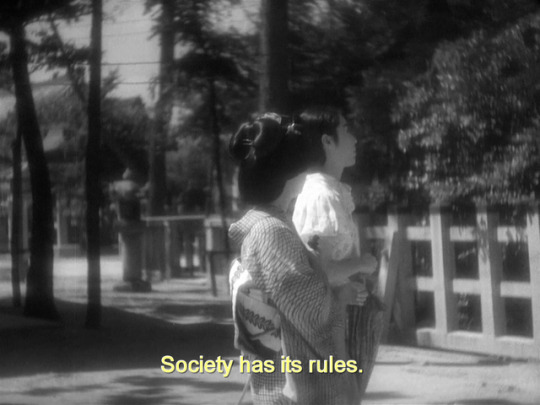
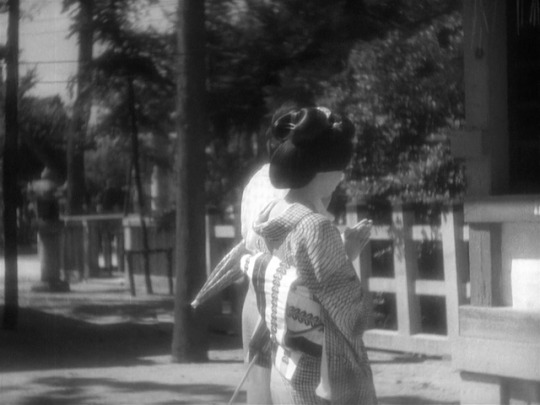


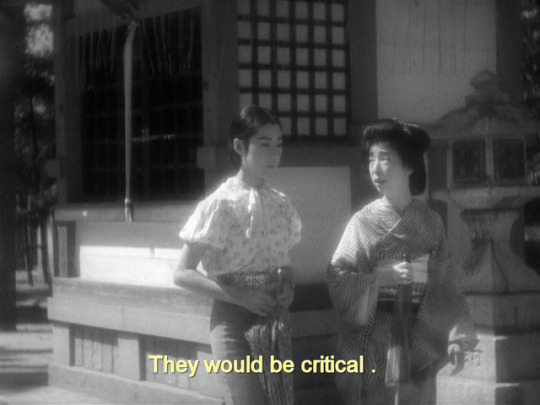





A walk with “Sisters of the Gion” (Kenji Mizoguchi, 1936)
80 notes
·
View notes
Photo



祇園の姉妹 Sisters of the Gion (1936, Kenji Mizoguchi)
21 notes
·
View notes
Text
A Complete List of Official Fire Emblem Novels
Hey there, everyone!
Today, I haven’t prepared a translation, but a comprehensive list of every official Fire Emblem novel out there!
My ultimate goal is to translate them all myself, but... obviously, that’s an insanely huge project. I’ll just focus on them one at a time. :)
Whether you’d like to collect them yourself, or just be aware of what exists, this list should be perfect for you!
There is a list on Serenes Forest, but it’s missing a lot of pictures and ISBNs, and makes finding the books on Amazon and other sites take some extra work. This should help everyone out a lot. :)
If you’d like to buy them yourself and are in Japan, Amazon.jp and Suruga-ya (駿河屋) are your best options. Best of luck and sorry for stealing a lot of the good deals! ^^’ Ebay is probably your best bet for outside of Japan? Not entirely sure.
Enjoy!
Shadow Dragon (FE1)


A novelization.
One volume.
By 山口 宏 (Hiroshi Yamaguchi).
ISBN 4-575-23131-2


A novelization.
One volume.
By 篠崎 砂美 (Sami Shinosaki).
ISBN 4-7577-0190-X
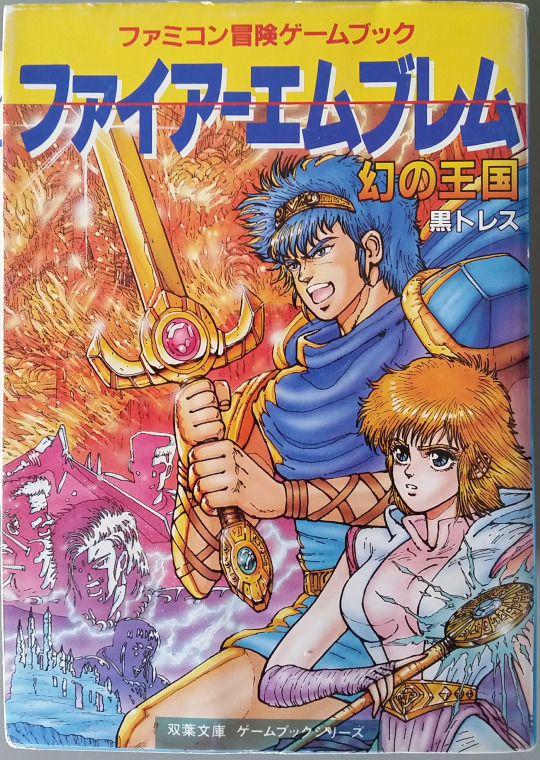

A game book / choose-your-own-adventure.
One volume.
By 黒トレス (Kurotoresu).
ISBN 4-575-76149-4
Gaiden (FE2)




A novelization.
Two volumes.
By 尾崎 克之 (Katsuyuki Ozaki).
ISBN:
4-575-23151-7
4-575-23152-5
Mystery of the Emblem (FE3)
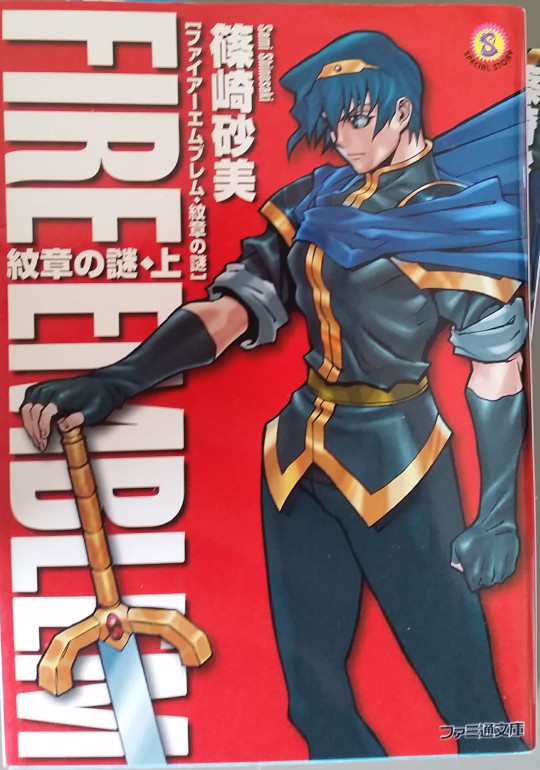



A novelization. The follow-up to the Shadow Dragon novelization written by the same author. (It’s the second book listed in the Shadow Dragon section of this list.)
Two volumes.
By 篠崎 砂美 (Sami Shinosaki).
ISBN:
4-7577-0278-7
4-7577-0309-0








A novelization.
Four volumes.
By 高屋敷 英夫 (Hideo Takayashiki).
ISBN:
4-09-440221-7
4-09-440222-5
4-09-440223-3
4-09-440224-1
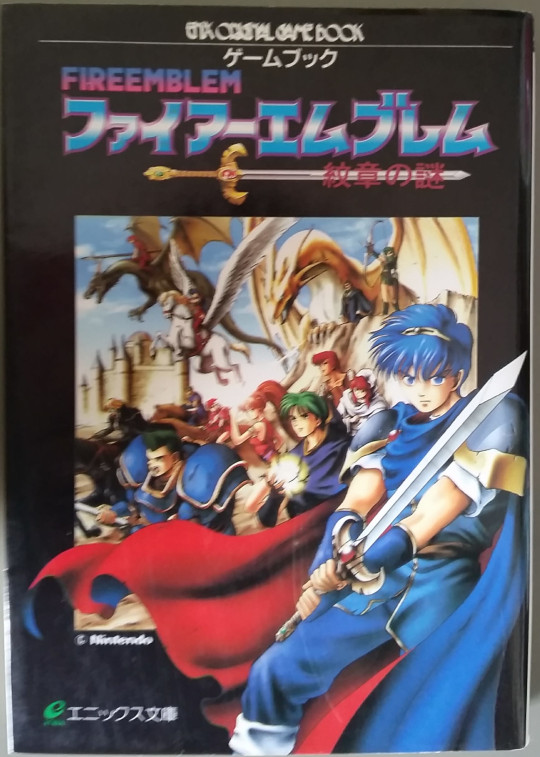
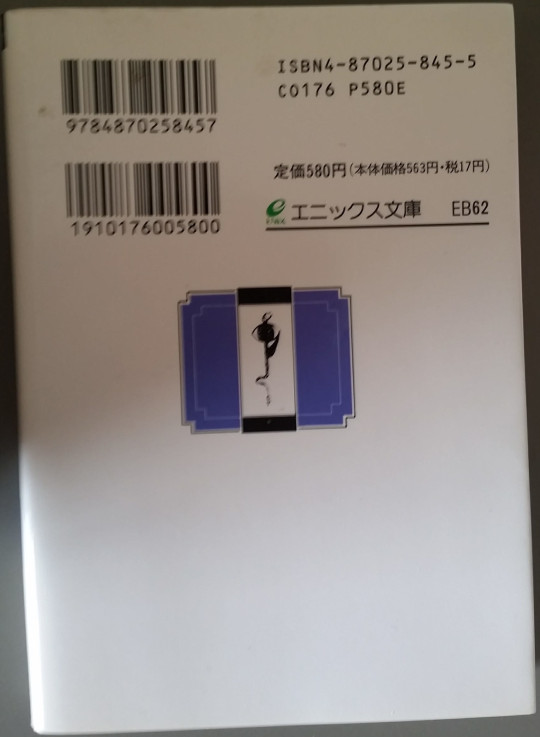
A game book / choose-your-own-adventure.
One volume.
Accredited to M’s Company (エムズカンパニー), along with the following names: Misa Ikeda, Yoko Maekawa, Natsu Ando, Itsuki Satou (池田 美佐、前川 陽子、安藤 夏、沙藤 樹).
ISBN: 4-87025-845-5
Genealogy of the Holy War (FE4)
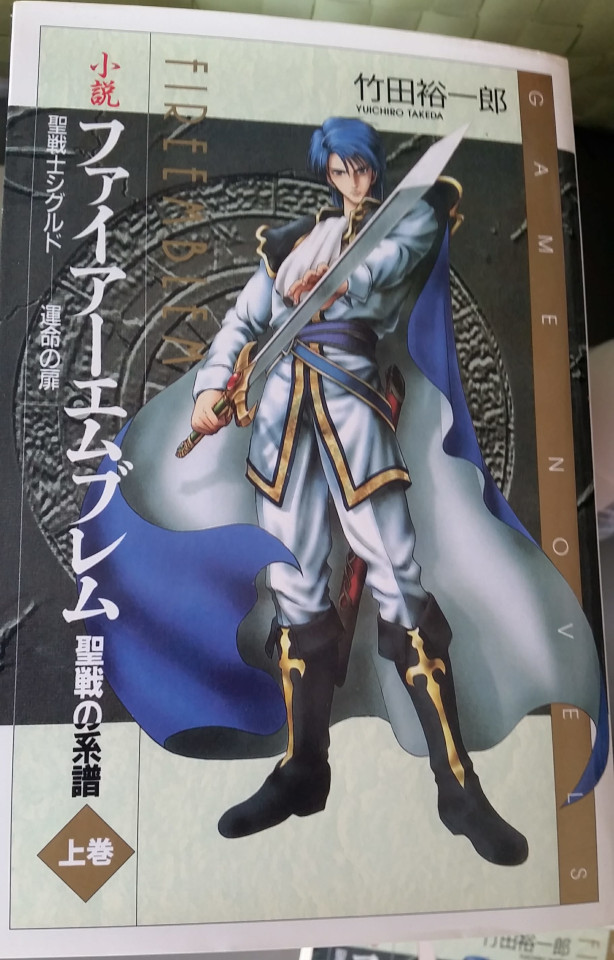


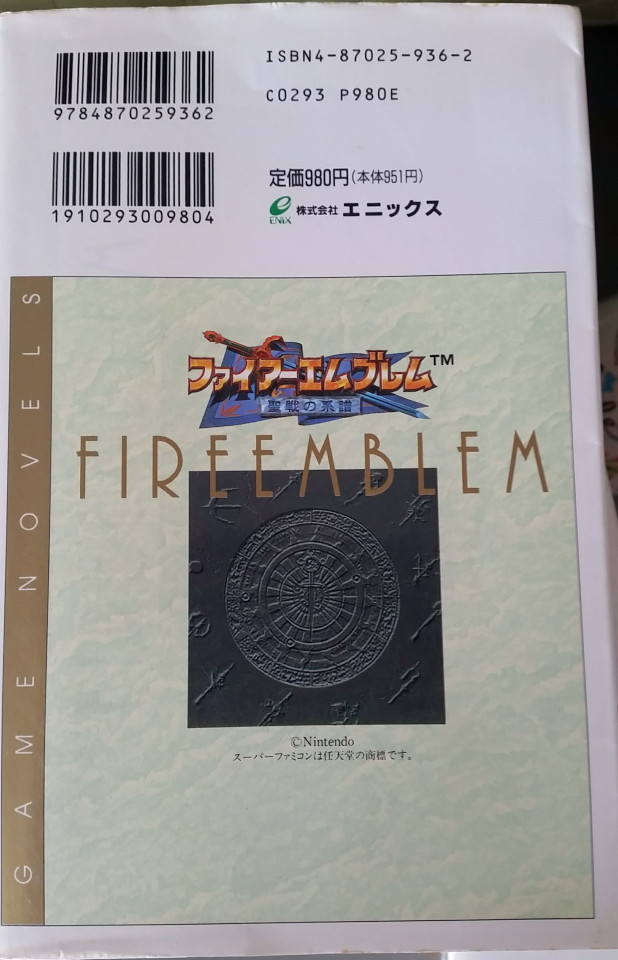
A novelization.
Two volumes.
By 竹田 裕一郎 (Yuichiro Takeda).
ISBN:
4-87025-916-8
4-87025-936-2
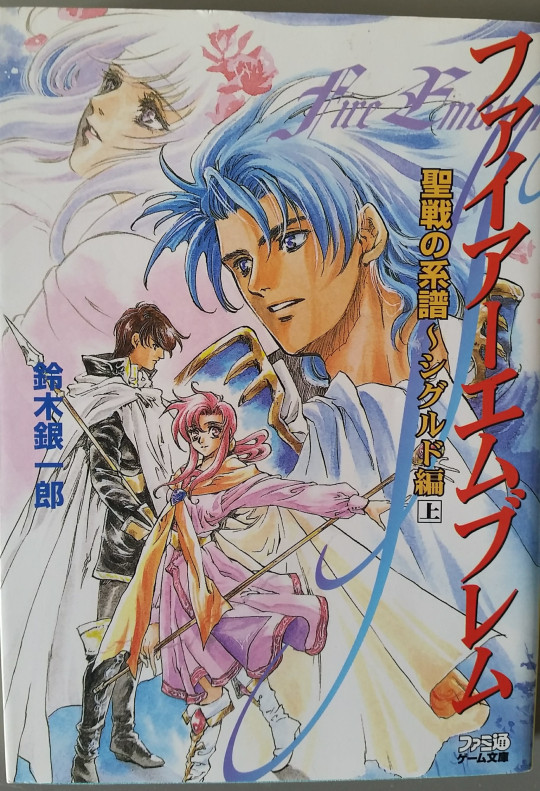

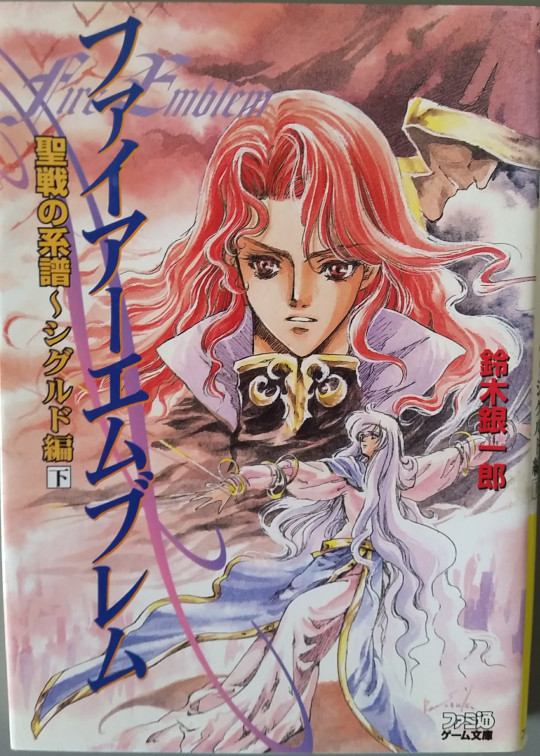
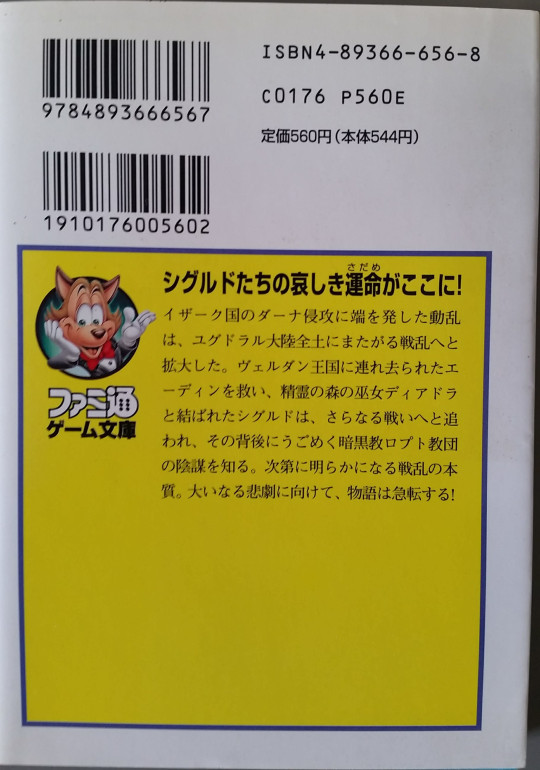

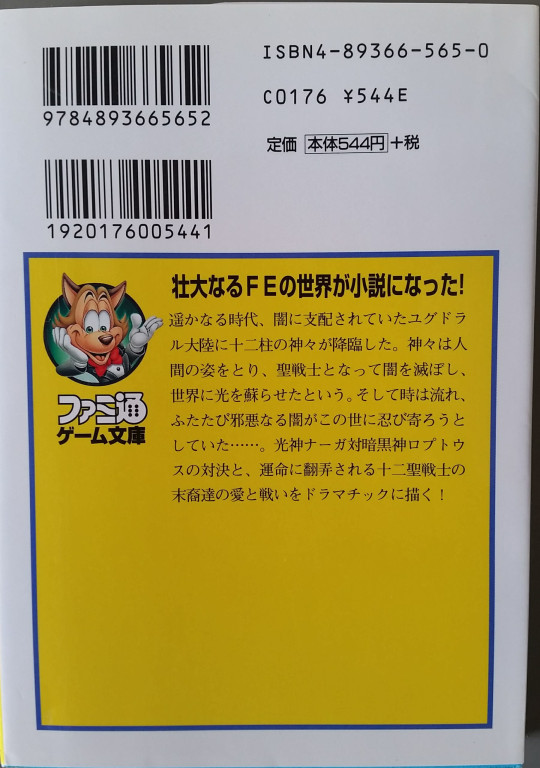
A novelization.
Three volumes. Two for Gen 1, and one for gen 2.
By 鈴木 銀一郎 (Ginichiro Suzuki).
ISBN:
4-89366-630-4
4-89366-656-8
4-89366-565-0


A collection of short stories about gen 1 that weren’t fully fleshed out in FE4, such as the story of Forseti, and what happened to Brigid after the Battle of Balhalla.
One volume.
By 鈴木 銀一郎 (Ginichiro Suzuki).
ISBN: 4-89366-889-7
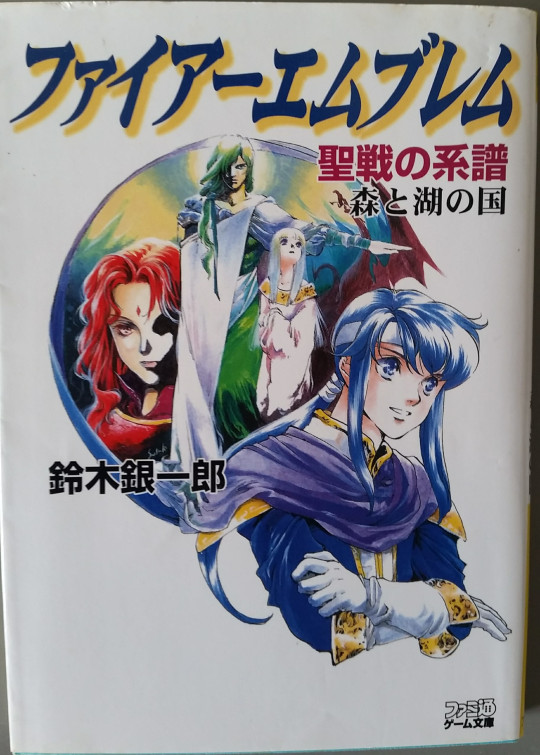

A collection of short stories about gen 2, including at least one original story!
One volume.
By 鈴木 銀一郎 (Ginichiro Suzuki).
ISBN: 4-89366-922-2
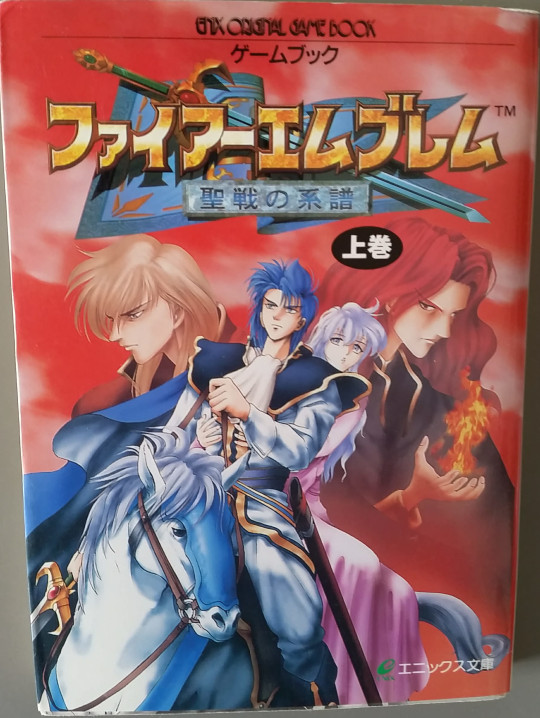
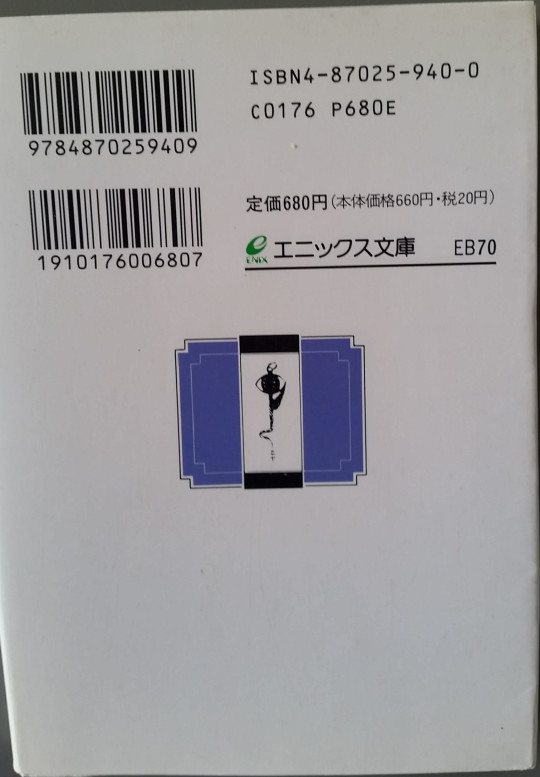


A game book / choose-your-own-adventure.
Two volumes.
Accredited to M’s Company (エムズカンパニー), along with the following names: Misa Ikeda, Yoko Maekawa (池田 美佐、前川 陽子).
ISBN:
4-87025-940-0
4-87025-941-9
Thracia 776 (FE5)



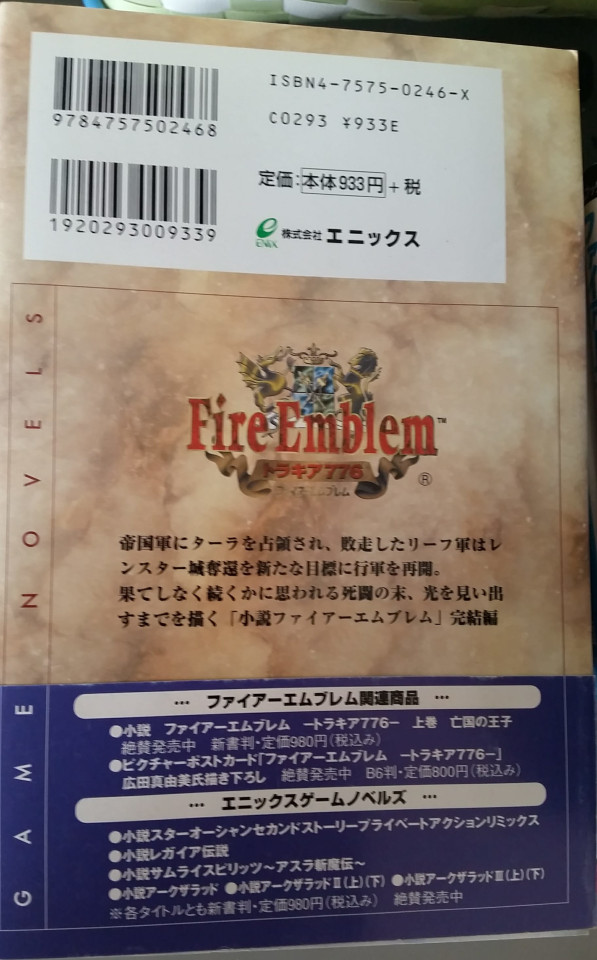
A novelization.
Two volumes.
By 梅村 崇 (Takashi Umemura).
ISBN:
4-7575-0237-0
4-7575-0246-X
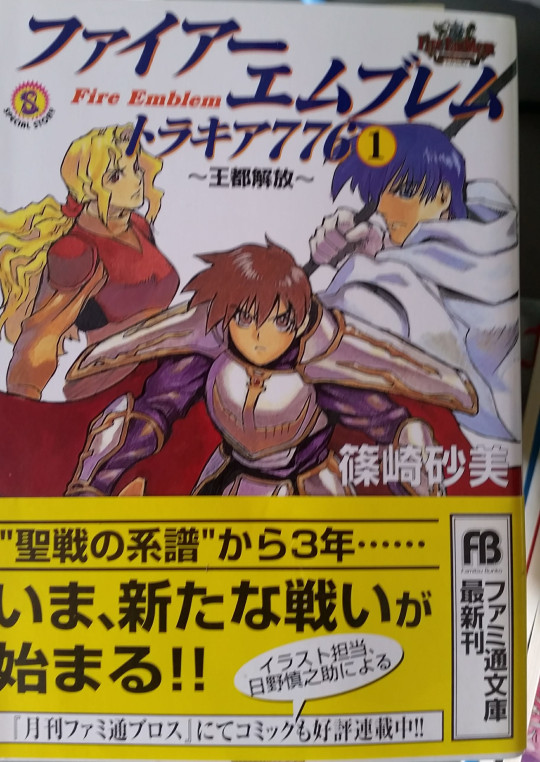

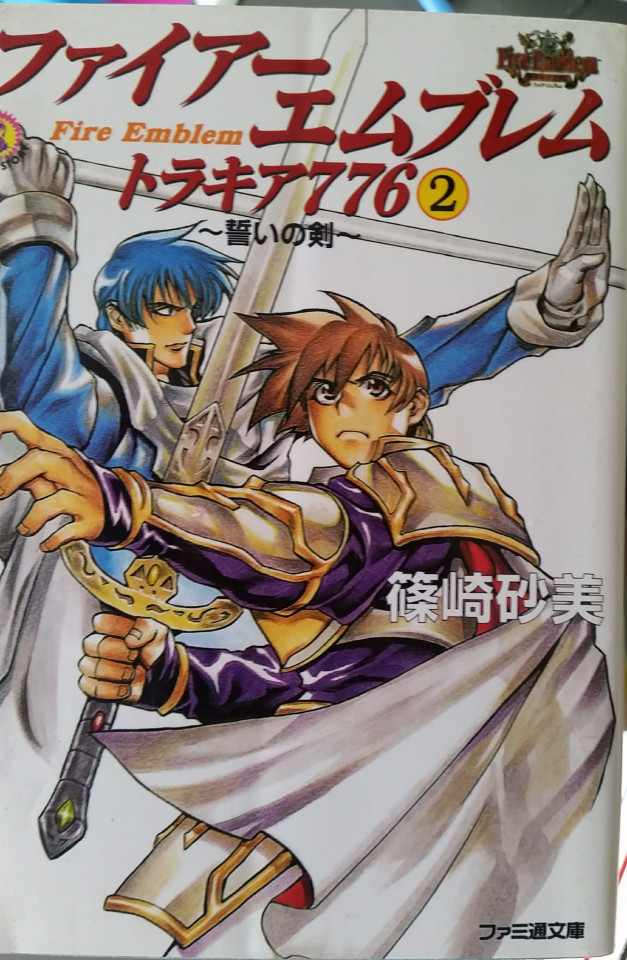


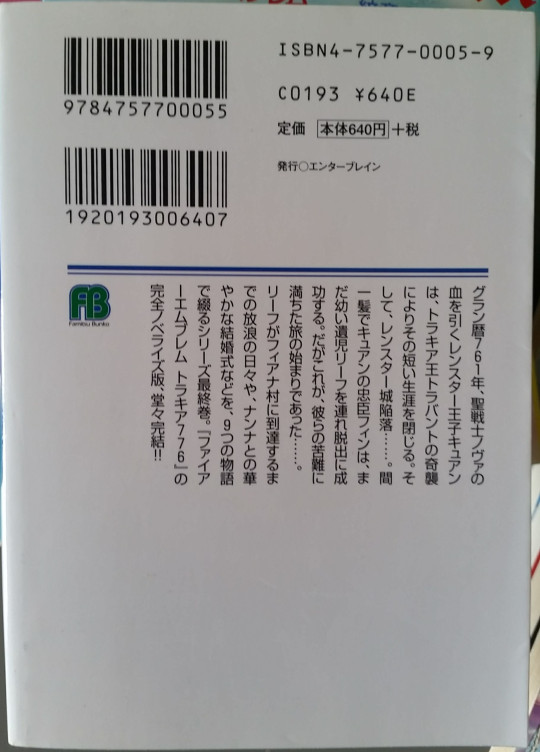
A novelization.
Three volumes.
By 篠崎 砂美 (Sami Shinosaki).
ISBN:
4-7572-0600-3
4-7572-0690-9
4-7577-0005-9
Binding Blade and Blazing Blade (FE6&7)

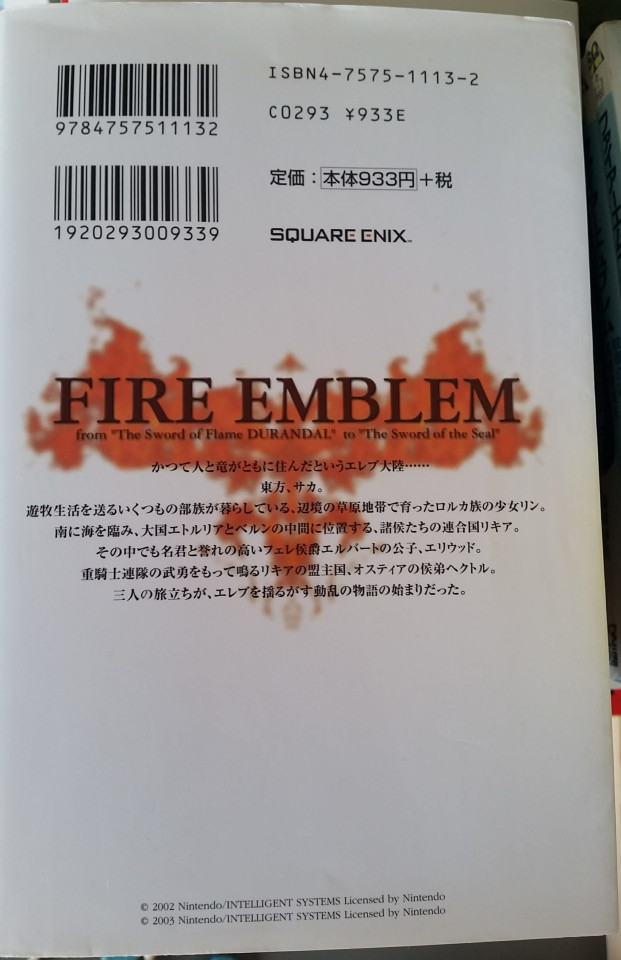


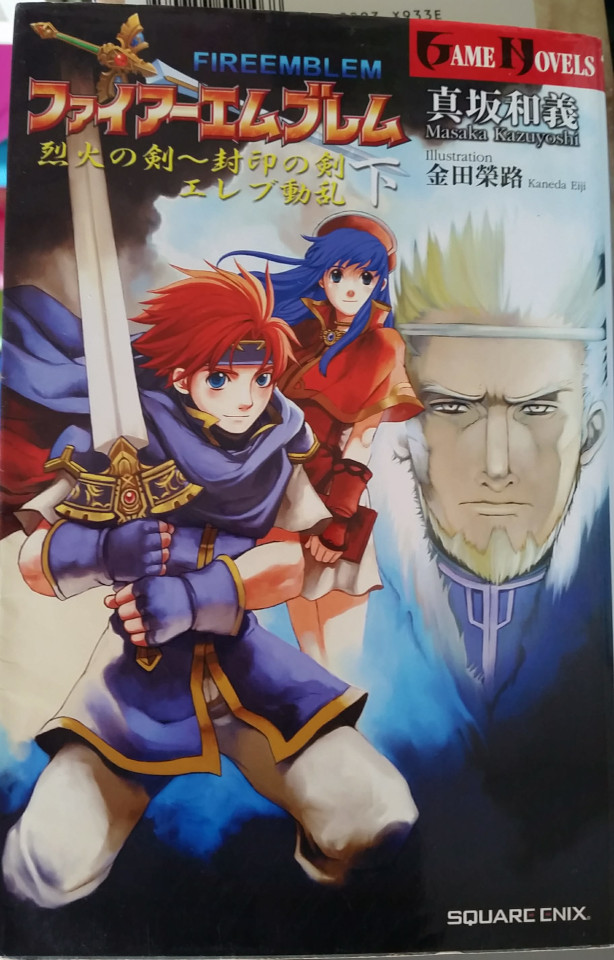

A novelization.
Three volumes. Two for Blazing Blade, and one for Binding Blade. They are ordered based on the in-game timeline, not when the actual games released, so the Blazing Blade books come first.
By 真坂 和義 (Kazuyoshi Masaka).
ISBN:
4-7575-1113-2
47575-1150-7
4-7575-1151-5
Sacred Stones (FE8)
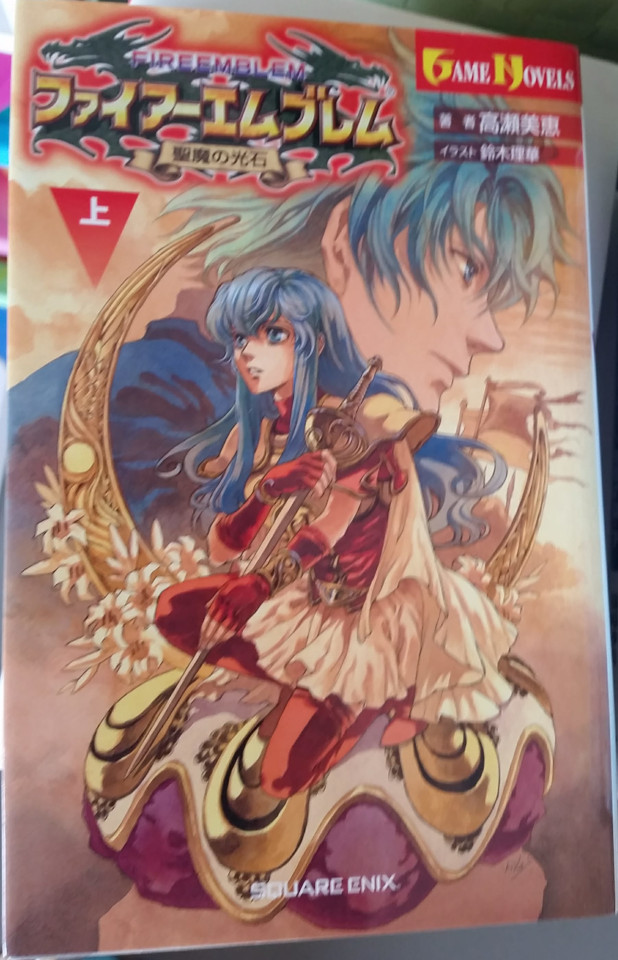


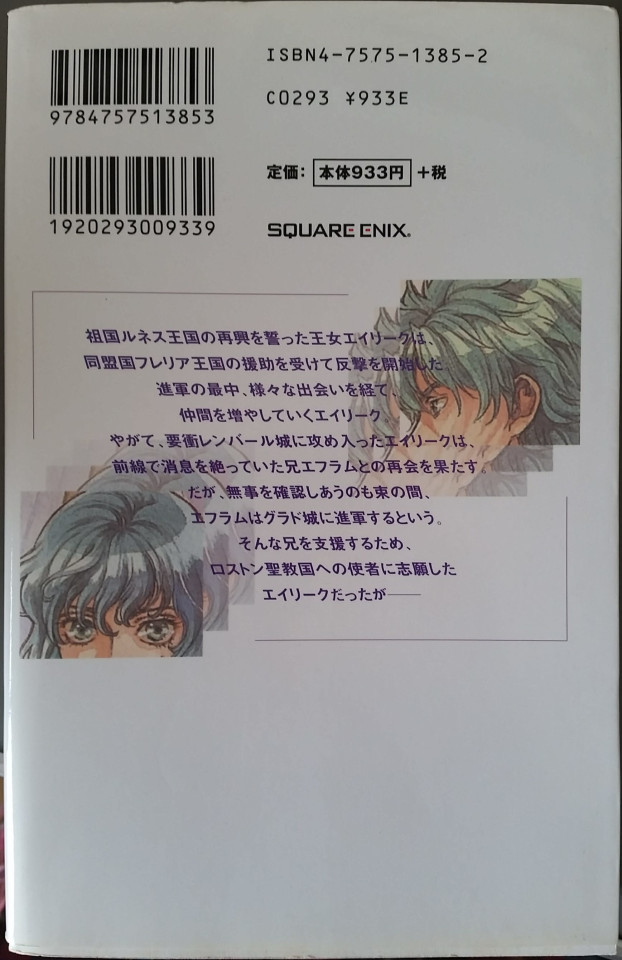
A novelization. An Amazon review said that it focuses on Eirika’s story, but I have yet to confirm this for myself.
Two volumes.
By 高瀬 美恵 (Mie Takase).
ISBN:
4-7575-1384-4
4-7575-1385-2
#fire emblem#shadow dragon#gaiden#new mystery of the emblem#genealogy of the holy war#thracia 776#blazing blade#binding blade#sacred stones#famicom#super#nes#snes#game boy advance#gba#fe1#fe2#fe3#fe4#fe#fe6#fe7#fe8#japan#japanese#novel#novelization#game book#choose#your
97 notes
·
View notes
Photo





Movies of the 1930s. (Haz Clic para ver las demás imágenes).
0 notes
Photo
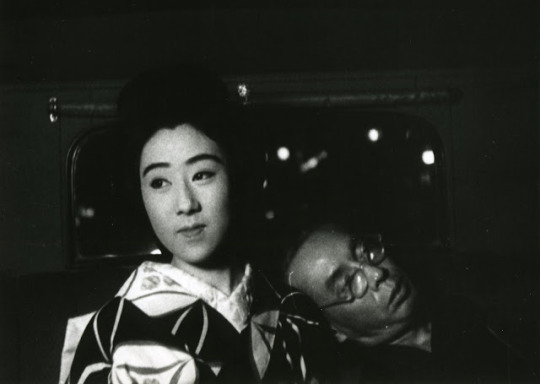
Isuzu Yamada and Fumio Okura in Sisters of the Gion (Kenji Mizoguchi, 1936)
Cast: Isuzu Yamada, Yoko Umemura, Benkei Shiganoya, Eitaro Shindo, Taizo Fukami, Fumio Okura, Sakurako Iwama. Screenplay: Kenji Mizoguchi, Yoshikata Yoda, based on a novel by Aleksandr Kuprin. Cinematography: Minoru Miki. Film editing: Tatsuko Sakane.
"Why do there even have to be such things as geisha?" laments Omocha (Isuzu Yamada) at the end of Kenji Mizoguchi's Sisters of the Gion. The line could well be a motto for Mizoguchi's career as a filmmaker, as he returned again and again to the theme outlined in the film, not just for geisha but also for prostitutes, mistresses, and wives: Why do women have to spend so much of their lives employing their talents, intelligence, and energy at pleasing men? In this larger sense it's a theme that preoccupied not only Mizoguchi but also Yasujiro Ozu, Mikio Naruse, and other Japanese filmmakers, especially after the war, when political and social change altered the roles of both sexes. Sisters of the Gion is decidedly pre-war, but it's a film that can hold its own with those of the postwar renaissance of Japanese film. It's both of its time and prophetic of what is to come, embodying the dynamic of tradition and change in its two sisters, Omocha and Umekichi (Yoko Umemura), the former outwardly faithful to but inwardly rebellious against her profession, the latter resigned to its demands. In the end, both suffer defeat, but the film implicitly endorses Omocha's defiant strength.
4 notes
·
View notes